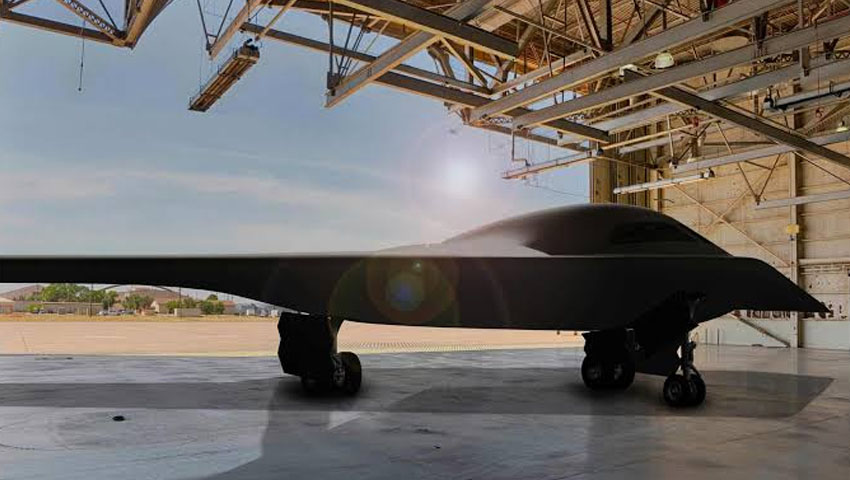With the B-21’s long range capabilities, and the advancement of unmanned long range Chinese strike technology, should Australia buy the B-21 as a deterrent?
Australia must consider the option of onboarding long range bombing capabilities into our military arsenal to serve as a deterrent to any state actors who threaten Australia’s sovereignty.
This is the opinion of Marcus Hellyer in ASPI’s The Strategist this week, who argues that long range bombing capabilities can serve as a stop gap before Australia’s next generation of submarines are onboarded into the military.
“These include long-range strike capabilities to impose greater cost on potential great-power adversaries at greater range from Australia,” Hellyer argues.
Hellyer outlines that Australia's current fleet of F-35A jets do not currently meet the requirements for strike missions in the event of a potential conventional war in the Indo-Pacific, as they are only capable of operating in a 1,000-kilometre radius – shorter than the striking distance of modern Chinese missile systems.
Meanwhile, the Australia's current fleet of submarines (numbering only six) also don't possess sufficient missile carrying capacity to serve as a deterrent.
On the other hand, Australia has historically operated long distance strike capabilities as a key component in the nation's defence arsenal.
“It’s strange that bombers don’t get much attention as a military option for Australia, considering we have a long history operating them. We flew bombers out of northern Australia during World War II against the Japanese to telling effect, and it was only a decade ago that the F-111, long a mainstay of Australia’s deterrent capability, was retired,” Hellyer argued.
Australia should thus consider onboarding a squadron of B-21 bombers, with the aircraft expected to be operational and used by the US military by the late 2020s, according to Hellyer.
“Remarkably for a developmental project, the B-21 seems to be roughly on schedule and on budget by leveraging the technologies used in earlier stealth aircraft projects. It’s using two F-35 engines, for example, but it will have three or four times the range of the F-35. That will allow it to reach far out into the Indo-Pacific, greatly complicating the planning of any adversary operating against us or our friends. It also means it can be based deep inside Australia, far from threats, and still not need to rely on tanker support,” Hellyer continues.
“If Australia had a squadron of 12 B-21s, it could dispatch a flight of three aircraft carrying around 30 long-range anti-ship missiles in the morning and follow it up with another in the afternoon. Unlike submarines, bombers can do it all again the next day. If the mission was to strike ground targets, they could each carry 50 guided bombs.”
Such long distance bombers are necessary to keep our adversaries at an arms distance and are able to inflict early and costly damage to our opposition.
The requirement for long range capabilities may have been exaggerated this week following a report from the South China Morning Post that the Chinese have developed a drone with similar capabilities to the B-21.
“A Chinese drone maker says it has manufactured a prototype unmanned stealth aircraft that it claims could rival the B-21 Raider being developed for the US Air Force,” Kristin Huang wrote in the South China Morning Post.
The new unmanned stealth bomber and reconnaissance drone which is under construction by Zhongtian Feilong Intelligent Technology is reported to have a 7,000-kilometre combat range.
Even though the B-21 is expected to have a longer attack range, Zhongtian Feilong outlined that its newly tested drone is cheaper and thus a credible threat.
As discussed in Defence Connect in the 2020 article 'CSBA CEO calls for serious US consideration of Aussie B-21 collaboration', it is likely that the US military establishment would view an Australian acquisition of the B-21 as burden sharing on the US, as Australia would be better equipped to protect its interests in the Indo-Pacific.
Writing for DefenseNews last year, chief executive of the Centre for Strategic and Budgetary Assessments (CSBA) Thomas Mahnken discussed how the sale of these arms to Australia would be an advantage to both nations.
"We need to learn from the past in developing the next generation of weapons. For example, in recent months, Australian defence analysts have discussed the attractiveness of the B-21 Raider stealth bomber for Australia’s defence needs,” Mahnken wrote.
"Export of the B-21 to a close ally such as Australia, should Canberra so desire, should be given serious consideration."
An Australian long range bombing capability would not only serve as a deterrent to any potential adversaries, but may prove a technological necessity in the event that new long range bombing and ISR drones encroach on Australian shores to inflict costly damage on an adversary’s homeland.
Get involved with the discussion and let us know your thoughts on Australia's future role and position in the Indo-Pacific region and what you would like to see from Australia's political leaders in terms of partisan and bipartisan agenda setting in the comments section below, or get in touch with









